

Paul Maric
1200hp Ram TRX vs Lamborghini Revuelto drag race
3 Days Ago
The Suzuki Ignis is one-of-a-kind. Part five-door hatch, part compact SUV and good clean fun to drive. It's one of the coolest little things going with just the right level of kit to keep most buyers happy.
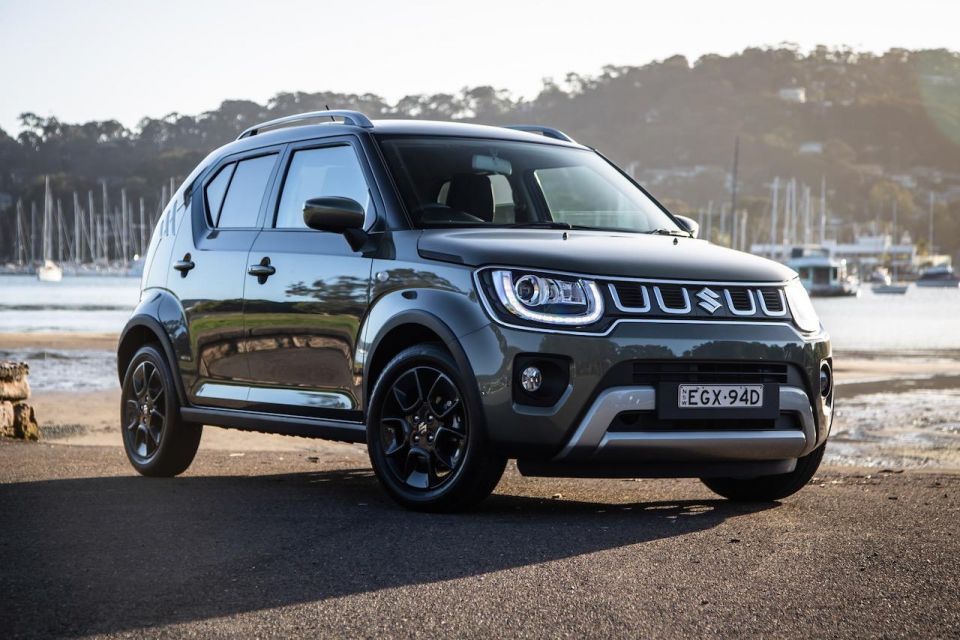


Senior Road Tester
New from
$16,690
excl. on-roads

Senior Road Tester
New from
$16,690
excl. on-roads


Senior Road Tester
New from
$16,690
excl. on-roads

Senior Road Tester
New from
$16,690
excl. on-roads
Quickly see how this car stacks up against its competition. Select any benchmark to see more details.
Where expert car reviews meet expert car buying – CarExpert gives you trusted advice, personalised service and real savings on your next new car.
What’s your take on light SUVs – are they big enough to be properly practical or are they completely useless?
I’ve never been a fan of these things. They’re just too small to be of any real use in my book and you’re far better off with a small five-door hatchback for similar money. At least that’s my take on the entire segment.
Case in point is my oldest daughter – still young at 28 years old, mind you – who is expecting her first child and has started to panic that her Kona (or is that our Kona) may not be large enough to accommodate baby, pram and her 183cm-tall tradie hubby, at least not in the usual seating configuration.

Apparently, he will have to sit in the back beside the baby seat when their son arrives due to the limitations of the vehicle’s space packaging. Remember, the Hyundai Kona is classed as a small SUV, so how on earth would something smaller than small like the Suzuki Ignis (one size down) cope with such everyday duties?
That said, I’m a sucker for cool, quirky (in a good way) automotive styling and the Ignis has got that in spades. From the relatively tall boxy shape to the stylistic vent-like cues pressed into the C-pillar and those extra-wide flared rear arches give this ultra compactSUV plenty of character and a cool visual stance.
Suzuki’s PR spin calls it the ‘only one of its kind’, and frankly, they might just be right if overall length is the key metric here. The Ignis measures just 3700mm long while similarly categorised rivals like the Hyundai Venue, Mazda CX-3 and Nissan Juke measure 4040mm, 4275mm and 4210mm, respectively.
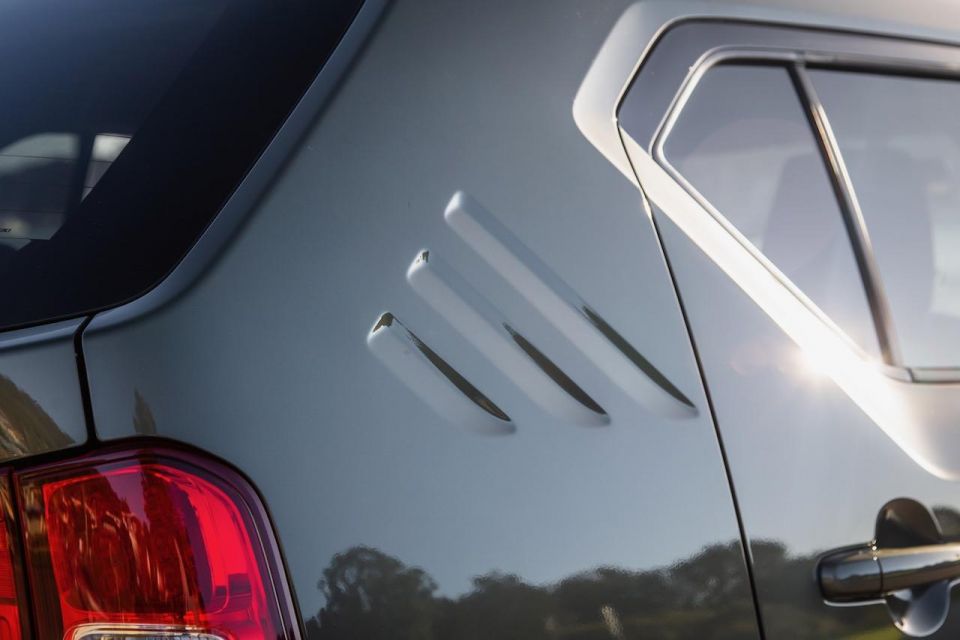
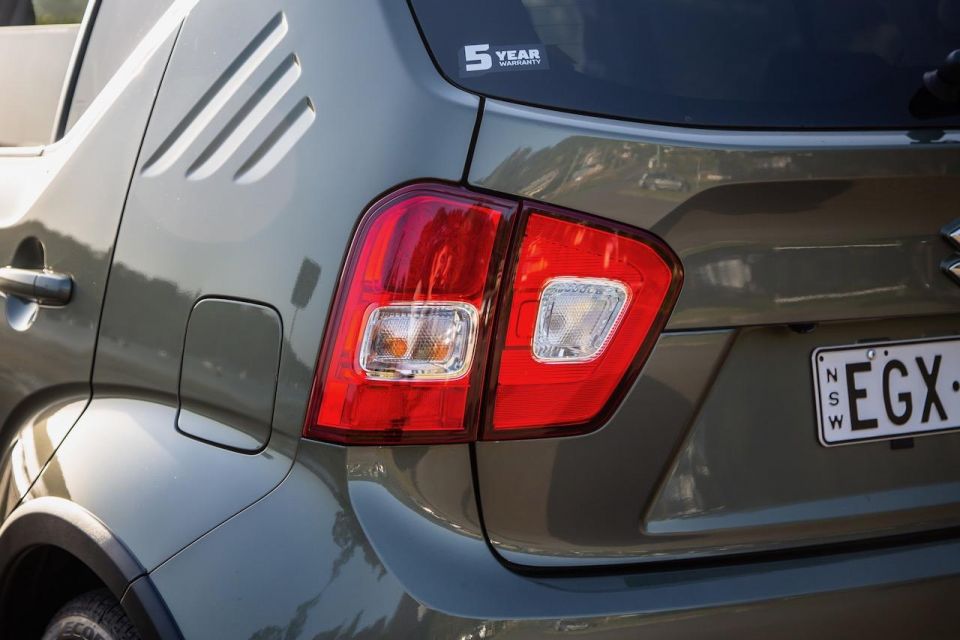
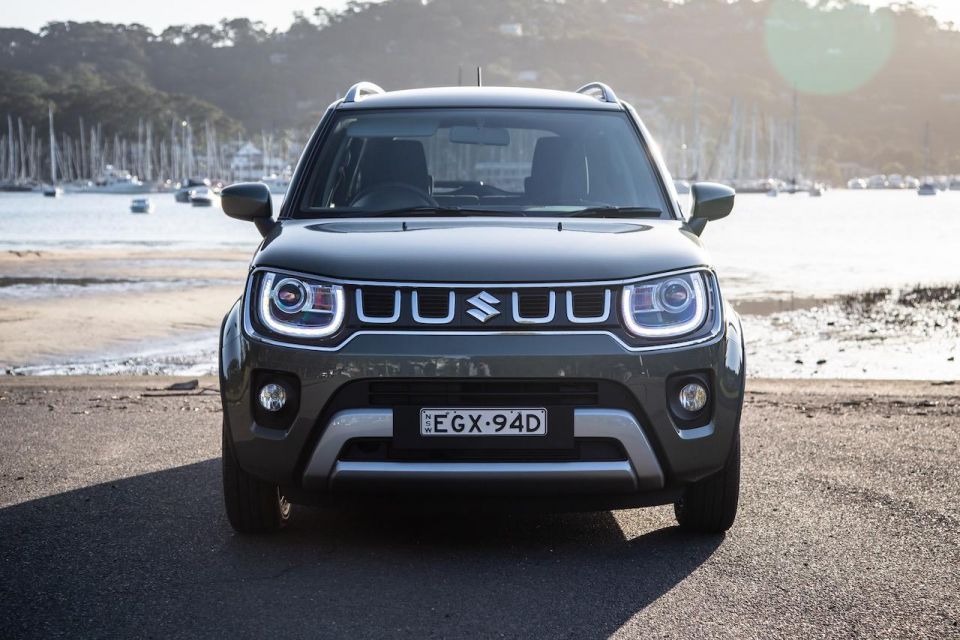
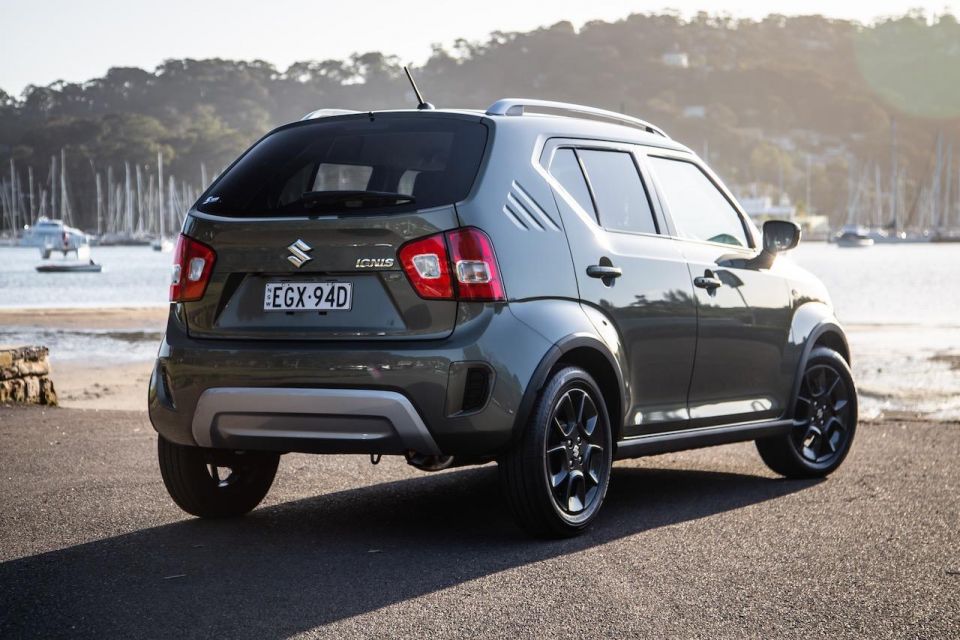
On that basis alone the Suzuki Ignis is certainly the smallest crossover SUV in the business, though its toy-sized if more rugged Jimny SUV sibling is shorter again measuring just 3645mm in length. Either way, the Ignis is a cinch to park even in the tightest spots and a breeze with U-turns.
It’s also hundreds of kilograms lighter than anything in its class, registering at a super-light 865kg while the others tip the scales at more than 1200kg.
There’s a decent amount of ground clearance, too, with the Ignis – 180mm compared to the Hyundai Venue’s 170mm or Nissan Juke’s 172mm. That makes the Suzuki easier to slide into for those with dodgy knees.
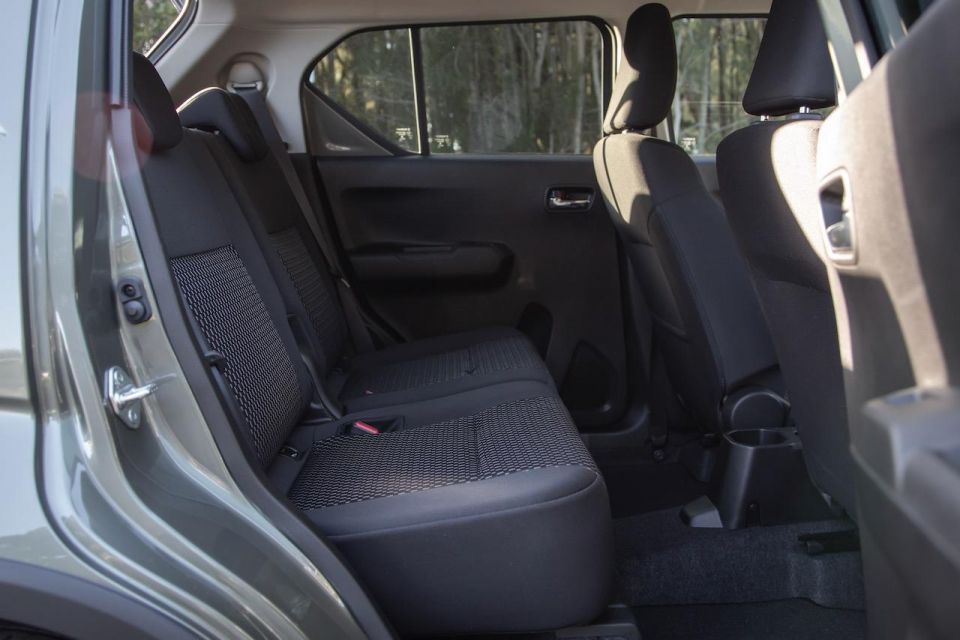
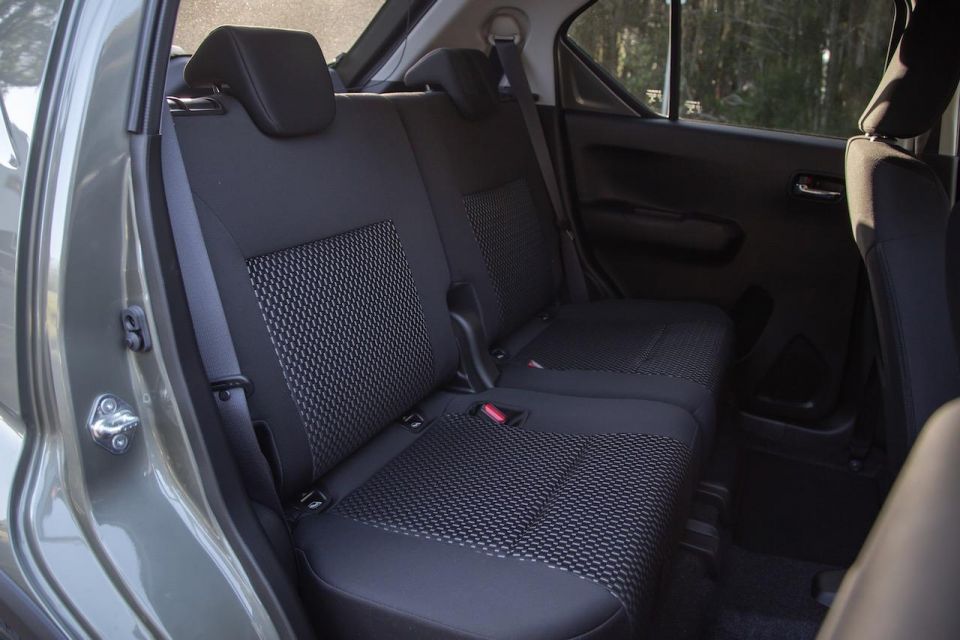
But don’t let the Ignis’s pint-sized dimensions fool you into thinking it’s not all that practical for couples (young or older) because the Suzuki Ignis is a clever little thing that makes the best of its teeny-weeny footprint with surprising rear legroom, sufficient boot space and decent levels of kit – all at an affordable price.
Oh, and the colour palette is cool, too. Our tester is Khaki Pearl but you can also have your Ignis in Pure White, Ivory Pearl, Mineral Gray (that’s how they spell it), Super Black and Fervent Red.
The good news is you can get into a five-speed manual transmission Ignis GL for as little as $17,990 plus on-road costs, or $18,990 drive away.
The automatic version uses a CVT and will set you back $18,990 before on-road costs or $19,990 drive-away, while the top-spec GLX, which we have here, commands a paltry $1000 premium at $20,990 drive-away and is absolutely the one to buy in terms of value for money.
All Ignis variants are powered by the same 1.2-litre four-cylinder naturally-aspirated petrol engine driving the front wheels. All-wheel drive and mild-hybrid technology are available overseas, but aren’t on the cards for Australia.
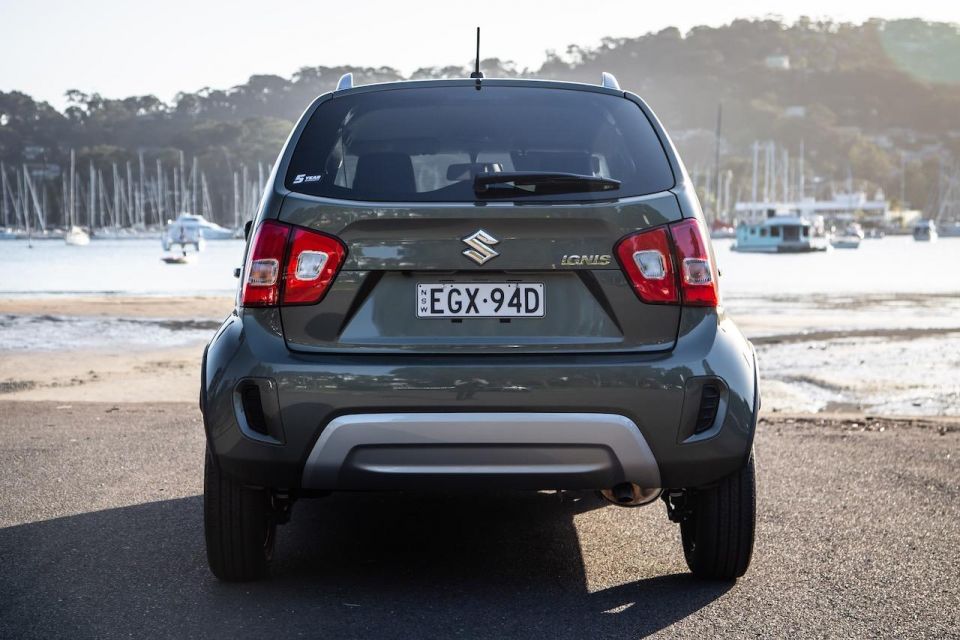

Rivals are almost all more expensive give or take the features and safety equipment. For example, there’s the Hyundai Venue which is priced from $20,190 plus on-road costs for the entry-level Gowith a six-speed manual or from $22,210 plus on-roads for the six-speed auto, though it comes with a significantly more powerful 1.6-litre engine. If you want the range-topping Venue Elite you’ll need to stump up $25,740 plus on roads.
The Mazda CX-3 is a different price bracket entirely with the base model Neo Sport using a 2.0-litre four-cylinder with six-speed manual kicking off from $22,710 plus on-roads, while the six-speed auto costs from $24,710 for front-wheel drive. The range tops out at a whopping $37,950 for the Akari AWD.
There are a few inclusions I now consider mandatory in a car if I’m buying and they include automatic LED headlights, Apple CarPlay and keyless start (unless it’s a 911). The Ignis GLX has those covered along with a few more niceties.

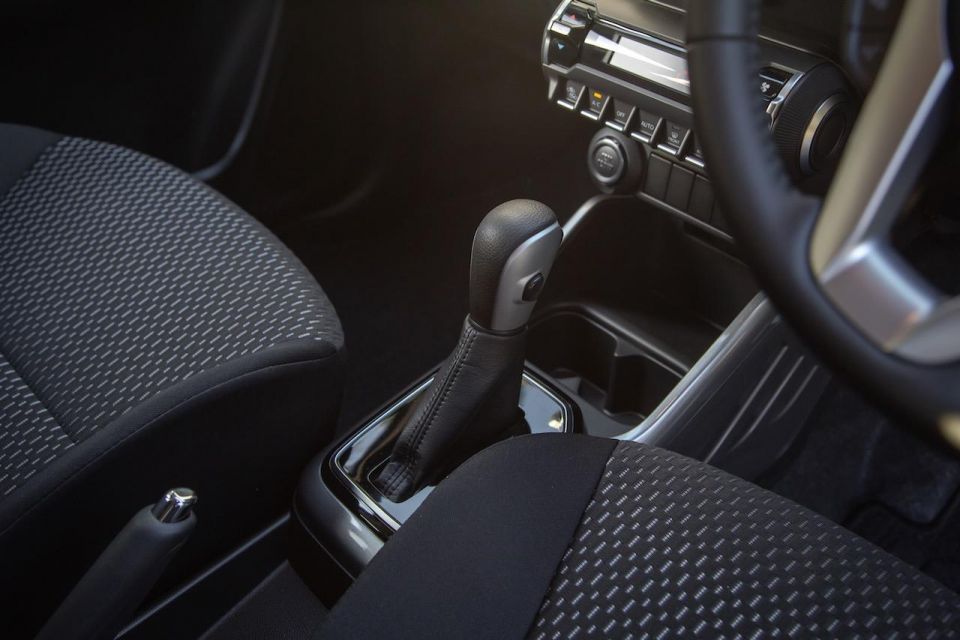
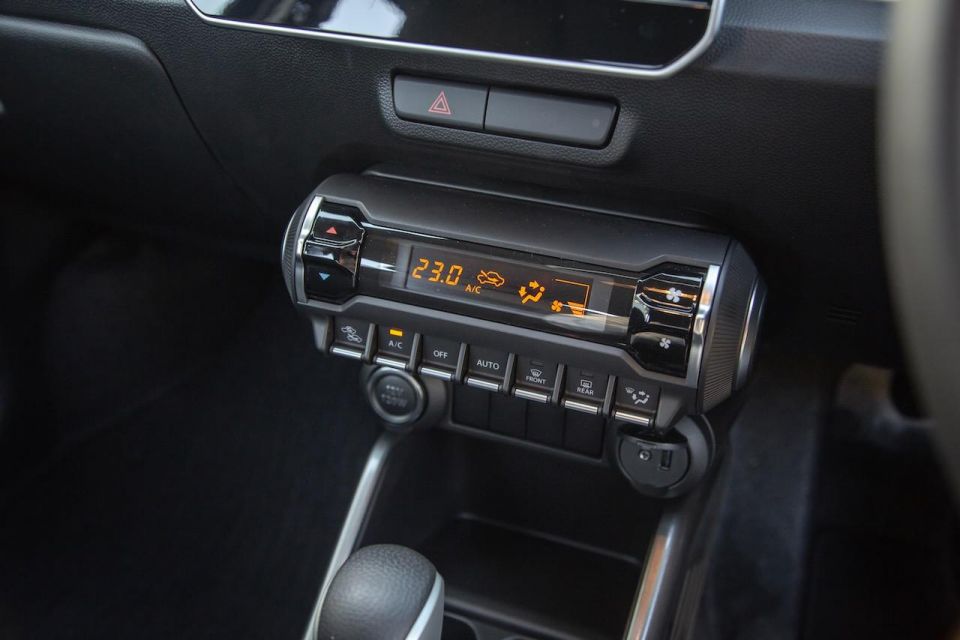

There’s also a 7.0-inch touchscreen infotainment system with satellite navigation (you won’t need that with CarPlay or Android Auto), as well as digital climate control, privacy glass, an acceptable six-speaker sound system, front fog lights and roof rails.
That’s actually hard to say, because the Ignis hasn’t been crash tested by ANCAP or Euro NCAP.
Interestingly, all variants of the Suzuki Swift get five stars, as do the Vitara and S-Cross. The Jimny gets three stars while the now discontinued Celerio was awarded four stars.
The Ignis comes standard with six airbags (dual front, front side and full-length curtain airbags), electronic stability control (ESC), electronic brake distribution (EBD), brake assist (BA) and cruise control.
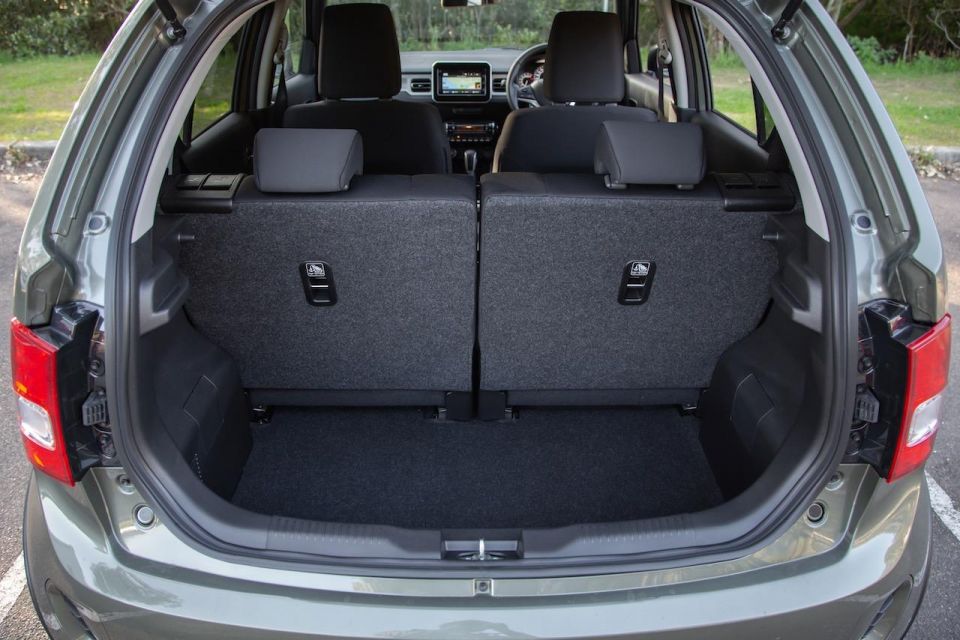
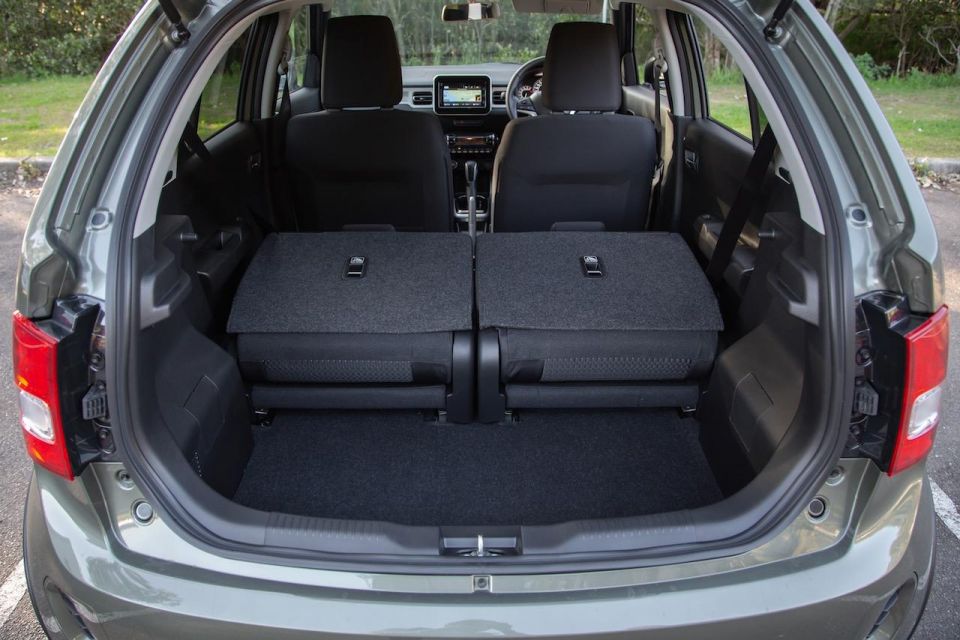


The problem is the Ignis gets none of the more advanced active safety systems such as autonomous emergency braking (AEB), blind-spot monitoring or lane departure warning, meaning it wouldn’t be able to achieve a five-star rating against current criteria.
However, there’s a reversing camera on both variants, as well as two ISOFIX anchor points in the rear seat and three top-tethers in the GL and two for the GLX.
Having said that, it is built in Japan and that inspires confidence in terms of build quality. Certainly to me it does.
Oddly enough, I was expecting less when I first got into the Ignis given its price point, or perhaps the fact I’d just hopped out of a McLaren 720S Spider – not exactly brimming with creature comforts itself but worth as much as 28 Ignis GLXs.
It’s all neatly presented with a favourable blend of fabrics and plastics in an uncluttered design, full of horizontal lines that make the cabin feel strangely light and airy.
The touchscreen is front and centre on the dash, with images and colour crystal clear and it’s very quick to fire up Apple CarPlay. The air vents are nicely styled and the flat dash opens up forward vision.
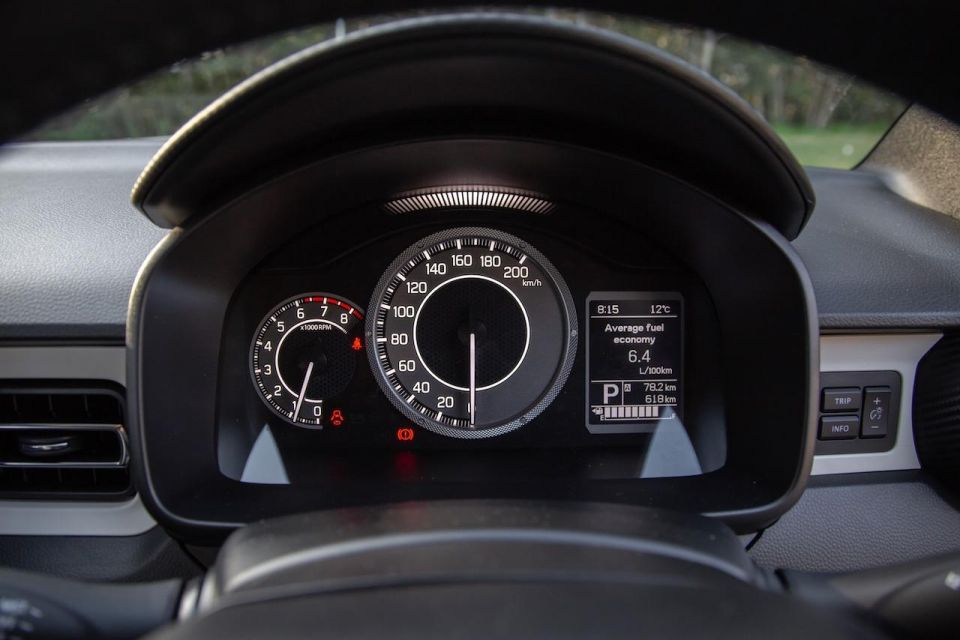
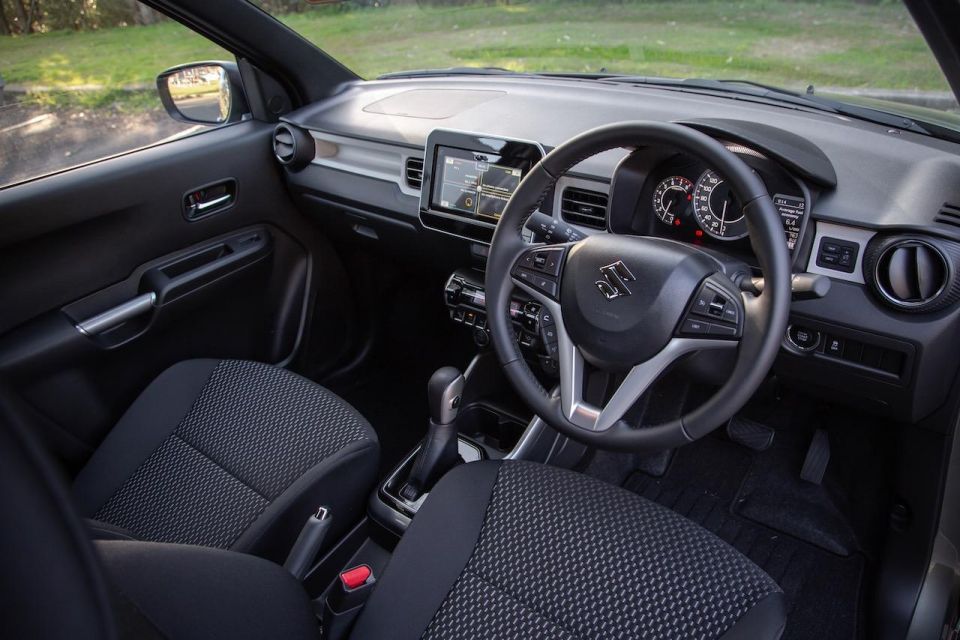


The thick gunmetal grey grab handles (you can option blue ones for some visual pop) look good and work well. That same theme continues throughout the centre console and I love the line of old-school rocker switches under the climate control display, too. Underneath that is the start/stop button and a USB port.
To be honest, even the hard plastics look and feel good to the touch and the front seats are more comfortable that I would have expected with sufficient lateral bolstering – though not a lot of rigidity in those.
I don’t mind the instrument display either. It’s super clean and very easy to read at a glance but sadly, there’s no digital speed readout which is a bit annoying these days.
Rear leg- and headroom, though, is excellent, especially given the second row seats slide and recline for even greater flexibility. And, just on that, there’s 264 litres of boot space behind the rear seats which expands to 516 litres (to the window line) with the second row folded.

In fact, if you lower the rear seats, maximum cargo space grows to 1104 litres but it’s not a flat floor unfortunately, so overall carry capacity is compromised in that regard.
Given the higher-than-usual ride height and the fact that the rear doors swing open to almost 90-degrees, it’s one of the easiest cars for passengers to access. Other car manufacturers should take note.
The Ignis also has plenty of other storage nooks about the cabin including bottle holders in all four doors but only a single rear map pocket and no rear armrest with cup holders. Oh, and there’s no centre console bin, which is slightly annoying.


Under the boot floor you’ll find a space-saver wheel.
It’s a 1.2-litre four-cylinder naturally-aspirated petrol engine banging out 66kW of power at 6000rpm and 120Nm of torque to the front wheels via a continuously variable transmission (CVT) in top-spec GLX trim, with a five-speed manual also available on the base GL if you prefer to change gears yourself.
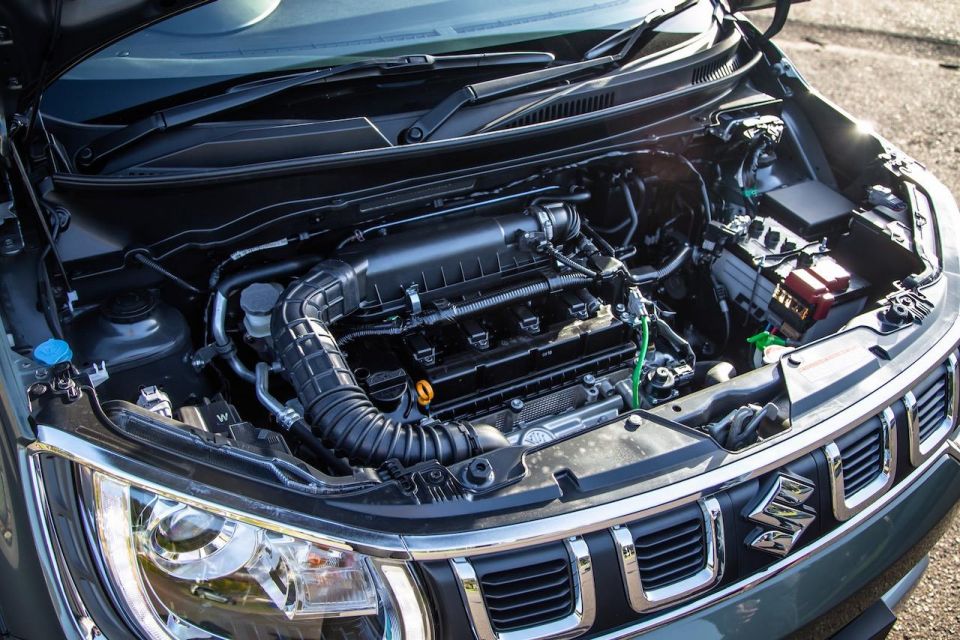
To give that some perspective, the substantially larger and heavier Hyundai Venue uses a 1.6-litre four-cylinder engine producing 90kW and 151Nm.
Not only are the front seats comfortable, but the elevated seating position means there’s good all-round vision for driver and passengers alike.
Ordinarily, you’d pretty much give up on a 1.2-litre four-cylinder petrol hooked up to a CVT. But the Ignis weighs just 865kg, so it’s perfectly fine for everyday urban duties.
Off the line, the Suzuki Ignis is punchy and there’s no issues keeping up with traffic. It’s only when you need to climb a seriously steep hill like Awaba Street in Sydney’s well-to-do suburb of Balmoral does it start to struggle unless you bury the throttle. Then there’s a bit of a racket.
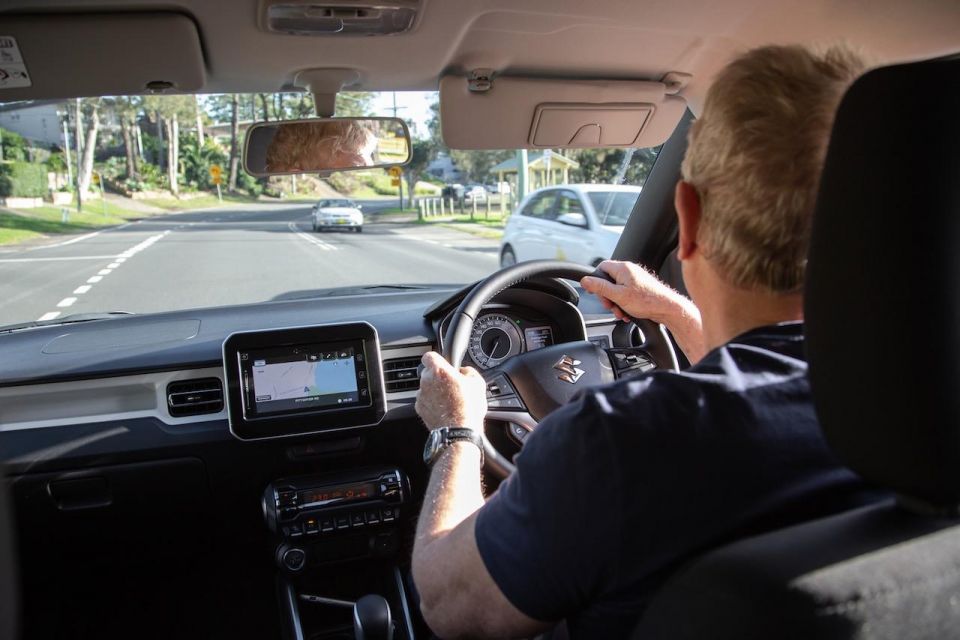
However, the Ignis gets both hill hold assist but not hill descent control, though an Allgrip version is available in some overseas markets, which would makes light work of both ascents and descents, no matter how steep they might be.
And, just because you’re perched higher than a standard hatch, it doesn’t mean the Ignis suffers from poor road manners. Quite the opposite, at least when rolling on the GLX’s larger 16-inch alloy wheels. The base GL gets smaller 15s, which I haven’t tested.
Underneath, it’s a rigid yet light chassis and you can feel the effects from the moment you first hook in to a corner. It’s solid with very little body roll – not what I would have expected. It’s almost fun with its relatively neutral steering and good responses.
Despite the fact the Ignis wears old-school drum brakes on the rear with ventilated discs up front, braking is good given there’s a progressive pedal.
Best of all is the Ignis’s ridiculously good manoeuvrability in tight spots thanks to its 4.7-metre turning radius. By way of comparison the Hyundai Venue has a turn radius of 5.1 metres.
With little regard for fuel economy from its diminutive 32-litre fuel tank, the best I got all week was 6.4L/100km. That said, I’m pretty certain with a bit more care and not such a heavy right foot, low fives would be well within its grasp, if not the factory claim of 4.9L/100km.
The other good news is the Ignis is covered by a five-year/unlimited kilometre warranty for private buyers, while commercial use is restricted to five years or a maximum of 160,000kms.

Suzuki also has capped-price service plans for the Ignis for the first six years. The total cost for the first service is $239, followed by $329, $329, $329, $239 and $499 for the final year covered under this plan.
There’s no roadside assist plan, though, so that’s for you to arrange.
The complete lack of active safety features will likely be a deal-breaker for many buyers, but for those who want a cheeky little runabout with SUV-style ride height, seating position and practicality that belies its physical size – you won’t be disappointed with the Suzuki Ignis.
It’s a fun thing for so many reasons.
Where expert car reviews meet expert car buying – CarExpert gives you trusted advice, personalised service and real savings on your next new car.


Paul Maric
3 Days Ago
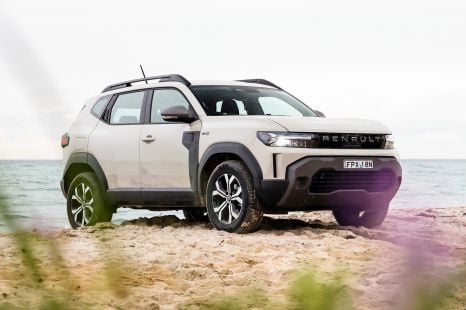

Max Davies
3 Days Ago
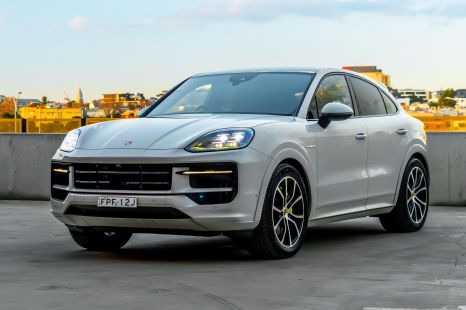

James Wong
3 Days Ago


Shane O'Donoghue
2 Days Ago
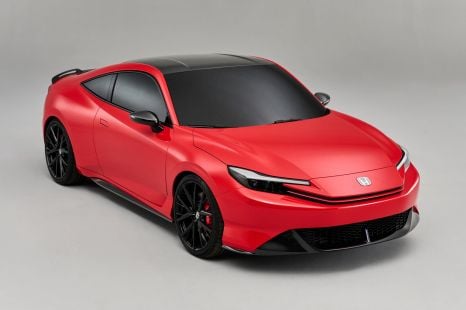

Damion Smy
2 Days Ago


Matt Campbell
1 Day Ago